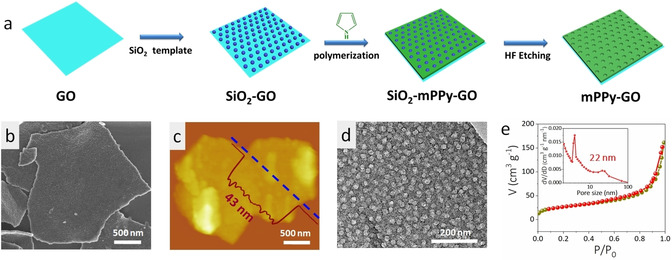H.D. Shi, J.Q. Qin, K. Huang, P.F. Lu, C.F. (J.) Zhang, Y.F. Dong, M. Ye, Z.M. Liu, and Z.-S. Wu*
Angewandte Chemie International Edition, 2020, 59, 12147–12153.
DOI: 10.1002/anie.202004284 [PDF]

Guiding the lithium ion (Li‐ion) transport for homogeneous, dispersive distribution is crucial for dendrite‐free Li anodes with high current density and long‐term cyclability, but remains challenging for the unavailable well‐designed nanostructures. Herein, we propose a two‐dimensional (2D) heterostructure composed of defective graphene oxide (GO) clipped on mesoporous polypyrrole (mPPy) as a dual‐functional Li‐ion redistributor to regulate the stepwise Li‐ion distribution and Li deposition for extremely stable, dendrite‐free Li anodes. Owing to the synergy between the Li‐ion transport nanochannels of mPPy and the Li‐ion nanosieves of defective GO, the 2D mPPy‐GO heterostructure achieves ultralong cycling stability (1000 cycles), even tests at 0 and 50 °C, and an ultralow overpotential of 70 mV at a high current density of 10.0 mA cm−2, outperforming most reported Li anodes. Furthermore, mPPy‐GO‐Li/LiCoO2full batteries demonstrate remarkably enhanced performance with a capacity retention of >90 % after 450 cycles. Therefore, this work opens many opportunities for creating 2D heterostructures for high‐energy‐density Li metal batteries.